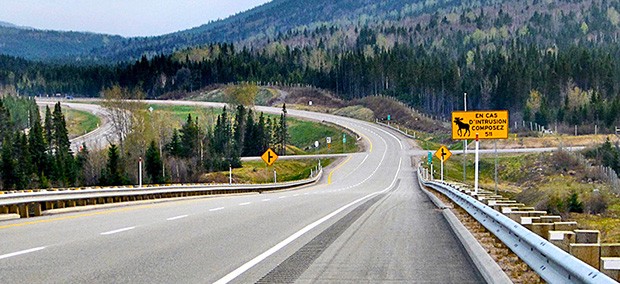How did the chicken cross the road … safely?

For many Canadians, summer holidays mean hitting the highway — but nothing puts a damper on a road trip like an accidental collision with a deer.
For Jochen Jaeger, a professor in Concordia’s Department of Geography, Planning and Environment, improving roadkill prevention is best approached through experimentation.
In a study recently published in the Journal of Environmental Management, Jaeger and a group of co-authors from international universities show that protecting animals from speeding vehicles doesn’t have a one-size-fits-all solution. Instead, a more detailed understanding of preventive measures should be gained through scientific experiments.
The study looks at the key questions asked by road planners, and uses case studies ranging from examples in the Greater Toronto Area to the wilds of Western Australia to illustrate how best to study the question how well mitigation measures for reducing wildlife-vehicle collisions work.
The first questions are the most fundamental: Does a certain type of crossing structure work better than another? What type and size of crossing structures should we use? How many crossing structures are needed on a certain stretch of road?
“Now that preventing roadkill has become a concern for both protecting biodiversity and increasing driver safety, planners want to know what types of preventative constructions will result in the least collisions possible — ideally, none at all,” says Jaeger. "It’s also important to see we can learn more effectively about the features that can improve their performance."
But with animals ranging from mice to moose, these mitigation measures can’t be the same in all situations. Indeed, they should include a range of options, such as:
- Animal detection systems
- Wildlife warning signs
- Measures to reduce traffic volume, speed and/or noise
- Temporary road closures
- Wildlife crossing structures
- Wildlife fences
- Modified road designs
Making the right comparisons is particularly important when studying how well the measures work. For example, comparing different types and sizes of crossing structures under similar conditions, and investigating the changes in road mortality when changes are made to the size of a particular measure, e.g., an increase or reduction of its width.
The study identifies a set of feasible experiments and recommends that researchers and road planners collaborate as early as possible in any given road project to implement the option that will be the most informative, given the project’s constraints.
"To build mitigation knowledge that can be applied in a variety of situations, we need to move from asking whether species X uses a wildlife passage at location Z to broader questions relevant to different species, landscapes, other roads or new road projects," says Jaeger.
"But there’s only so much you can learn on a case-by-case basis. To move to the next level of understanding, we need to do manipulative experiments that allow the application of statistical methods to quantify the relationships between the dimensions of mitigation measures and their benefit for wildlife populations,” says Jaeger.
He and his co-authors wrote this paper because planners aren’t used to this type of experimental thinking. They present a much-needed novel approach that will give road agencies around the world more reliable evidence to make informed decisions about which feature of the road or mitigation should be implemented or modified, and by how much.
“Many new roads are being constructed around the world right now. Ultimately, we want to be confident that the predicted impact of a road on a wildlife population will be at least partially lessened by the proposed road design, and that the investment in a particular type or combination of crossing structures and fencing is justified by evidence,” says Jaeger.
Partners in research — The co-authors of this study are: Trina Rytwinski, Glenn M. Cunnington, and Lenore Fahrig (Carleton University); Rodney van der Ree and Kylie Soanes (Australian Research Centre for Urban Ecology at the University of Melbourne); C. Scott Findlay (Institute of the Environment and University of Ottawa); Jeff Houlahan (University of New Brunswick at Saint John); and Edgar A. van der Grift (Wageningen University and Research Centre, The Netherlands).
Thumbnail: Getty Images.